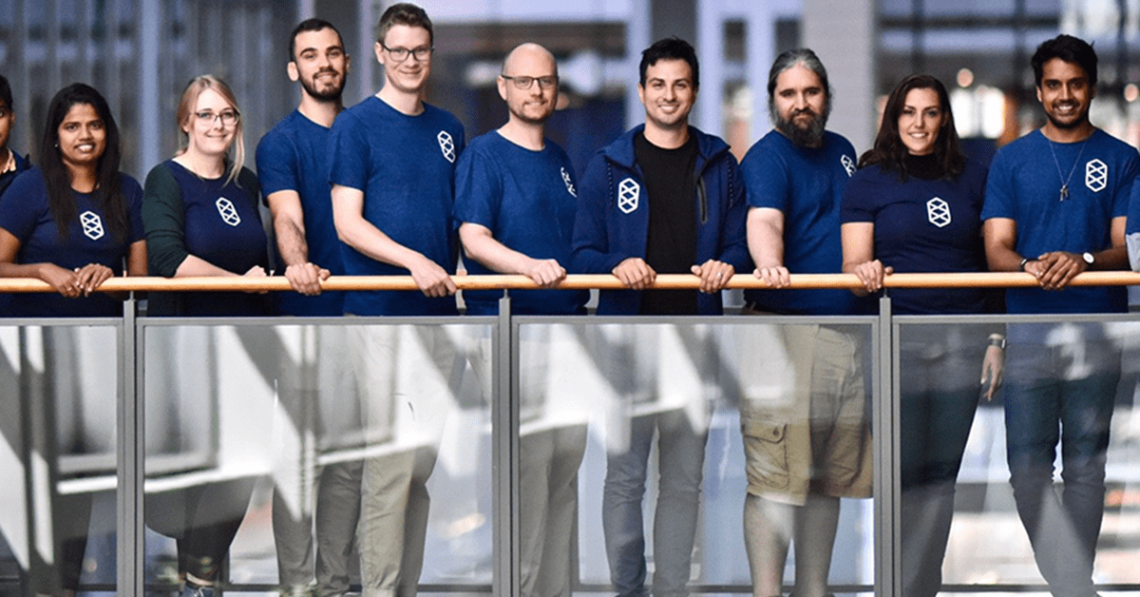Toronto company is ‘getting noticed’ as it works to build the digital infrastructure to power the next generation of scientific research
Seeing your startup in the pages of Wired magazine is a thrill for any high-tech entrepreneur, and that was certainly true for Marc Fiume in late 2017. However, Fiume’s ambitious plans for DNAstack required much more than media-fuelled momentum—and that’s where Canada’s Digital Technology Supercluster came in.
In a story on Google’s DeepVariant tool, which uses deep learning to identify the genetic mutations an individual inherits from their parents, Wired credited Fiume’s company for exploring the use of tensor processing units to accelerate genomics data processing. After all, one of the biggest challenges and most meaningful opportunities in the healthcare system is leveraging technologies to help interpret genetic data to better inform patient care and medical research.
Much has changed since the Wired article. DNAstack has spent years creating standards and building software that could allow a future “Internet of Genomics” to work, powered by the latest technologies in cloud computing and machine learning. As of Aug. 1, 2019, DNAstack has been part of a new $3.5-million project to accelerate the development of a Secure Health and Genomic Platform (SHGP) that aims to bring together patient medical data, including genetic information, on a secure, comprehensive platform with the potential to significantly improve health outcomes. The project was among the first to be selected and launched as part of the Digital Technology Supercluster, a federally funded program that recently received more than $150 million to stimulate the creation of competitive and innovative digital technology solutions.
“The Supercluster has dramatically accelerated our product development, talent acquisition, and access to capital. It has provided the perfect environment for DNAstack to grow, and is unlike any other program we’ve participated in” says Fiume, DNAstack’s CEO and co-founder.
With partners including Deloitte, Genome BC, LifeLabs, Microsoft, Molecular You, the British Columbia Provincial Health Services Authority, and the University of British Columbia, the SHGP leverages the Supercluster’s ecosystem of leaders in cloud computing, bioinformatics, data security, digital enablement, genome science, and health services.
“The opportunity to work with Microsoft and our other partners in this space, combined with access to Supercluster funding, perfectly aligns with our core business and product road map,” Fiume explains. “The Supercluster has allowed us to take a more ambitious track in software development because it gives us a longer horizon on what kind of product we can build. No other opportunity in Canada gives us the ability to scale like this one does.”
Since joining the project, DNAstack’s office has doubled in size—growing from 8 to 16 employees—with Fiume expecting a doubling in company revenue in 2020. “Based on the work we’re doing in Canada, we’re getting inbound interest from the United States and Europe, because our solution for improving access to biomedical data sets is relevant around the world,” he says. “This is a problem everyone is dealing with, and the Supercluster has allowed us to grow in this space. Because we’re growing, we’re getting noticed.”
The first phase of the SGHP is a proof-of-concept that will plan, design and build a prototype solution as a scalable, cost-effective, open, and interoperable system with a broad cross-section of stakeholders. The SHGP will include two unique areas — a Data Library and Application Marketplace — where users will interact with bioinformatics tools to load, search and share data.
In addition to platform development, the Supercluster has proven invaluable for generating investor interest in DNAstack, Fiume says. “Having programs co-invest with you, along with the positive optics of joining forces with big companies, creates a safer investment vehicle.”
A decade from now, Fiume believes many Canadian tech companies “will look back and say that they could not have made the level of impact they did, and could not have added thousands of jobs, without the Supercluster.”
DNAstack, for its part, is working to be “part of a chain-reaction leading to the widespread implementation of precision health,” Fiume says. “That means the medications patients receive will be informed not just by their medical history, but by genetic data revealing how they will respond to the drugs.”
With adverse reactions to medications currently accounting for up to 12 percent of emergency visits and 5 percent of hospital admissions, and claiming as many as 22,000 lives each year in Canada alone, this goal is of the utmost importance to both the healthcare system and to individual Canadians, especially with a growing number of people taking multiple medications.
In other words, with the Digital Technology Supercluster fuelling its ambitions, DNAstack’s story is just starting to be told.
